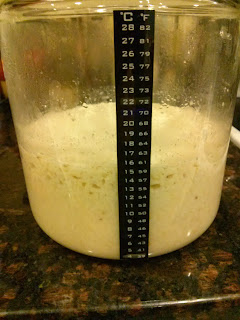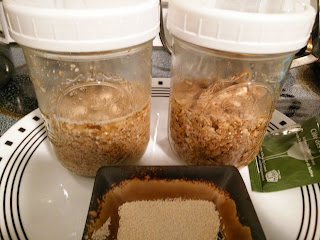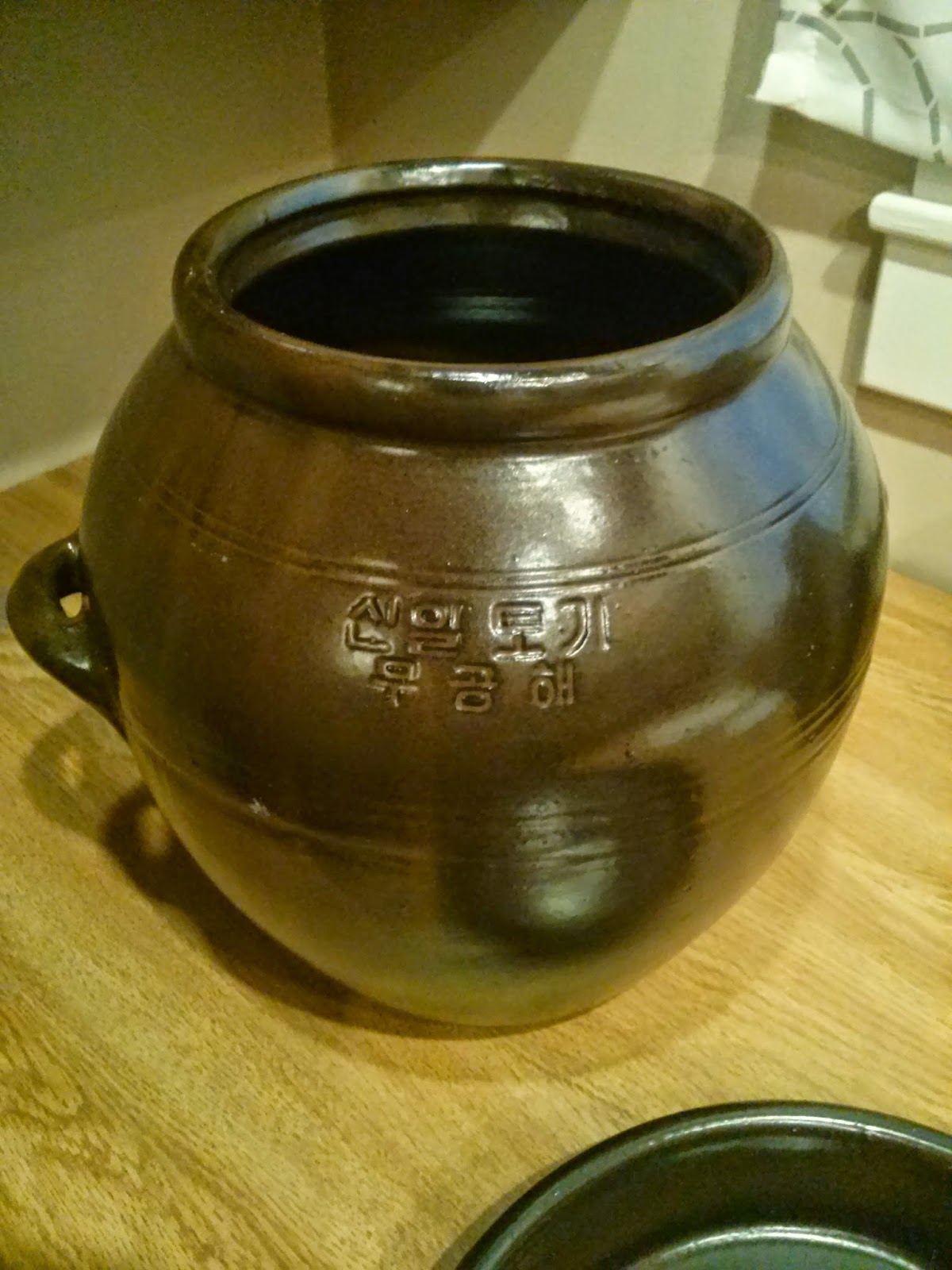A Tasting Brew for Koreatown, USA
Last week I was contacted by Matt Rodbard of Food Republic about makgeolli and makgeolli making. He is setting up to put together a book along with Deuki Hong about how Korean food has adapted/changed/evolved in the USA. You can check out a brief blurb about the book, Koreatown, USA on eater.com here.
Needless to say, I am excited for the chance to discuss making makgeolli, something I enjoy doing on a regular basis. I offered to give them a taste of what I make. What else is there to do except brew?
For this batch I used the ratio found in Making, Drinking, Enjoying Makgeolli but halved the portions.

Soaking rice, nuruk, and yeast.
Cooling the cooked rice. This time I used a damp cheesecloth to assist in moving the rice to the fermentation jar after cooling.
The cooled rice, soaked nuruk, and yeast come together for fermentation...
...and are stored in the dark.
@ the 24 hour mark you can see that the rice has absorbed most of the water and the mixture looks kind of dry. No worries, this is normal when there is a low volume of water.
@ the 48 hours the rice "cake" has clearly formed and is sitting atop the liquid bottom.
@ 72 hours bubbles from the fermentation are clearly visible. The rice cake may have decreased in size, but it is not easily noticeable because of the low volume of water.
Can you tell the difference between 72 and 96 hours?
120 hours have passed at this point. The rice cake is much smaller in comparison to the start of fermentation, and I think the small volume of water is preventing a more visible separation between the layers.
6 days have passed and I would like to bottle since I'm meeting the guys from Food Republic the following day. You can clearly see a transparent layer of alcohol between the surface of the mixture and the rice particulate, which is a good sign that fermentation is starting to slow and that the brew is approaching bottling condition.
Draining with a cheesecloth, in pajamas, for maximum authenticity. I'd compare it to milking a farm animal, but this is easier. Let the sweet nectar flow!
On the right you see what is left at the end of the process: a dense cake of rice and nuruk.
The finished bottle! Halfing the recipe yielded about 48 ounces of makgeolli.
Both bottles are ready for presentation. Next time I'd like to increase the water and hold the ratio of rice::nuruk::yeast constant. Cheers!

























Comments
Post a Comment